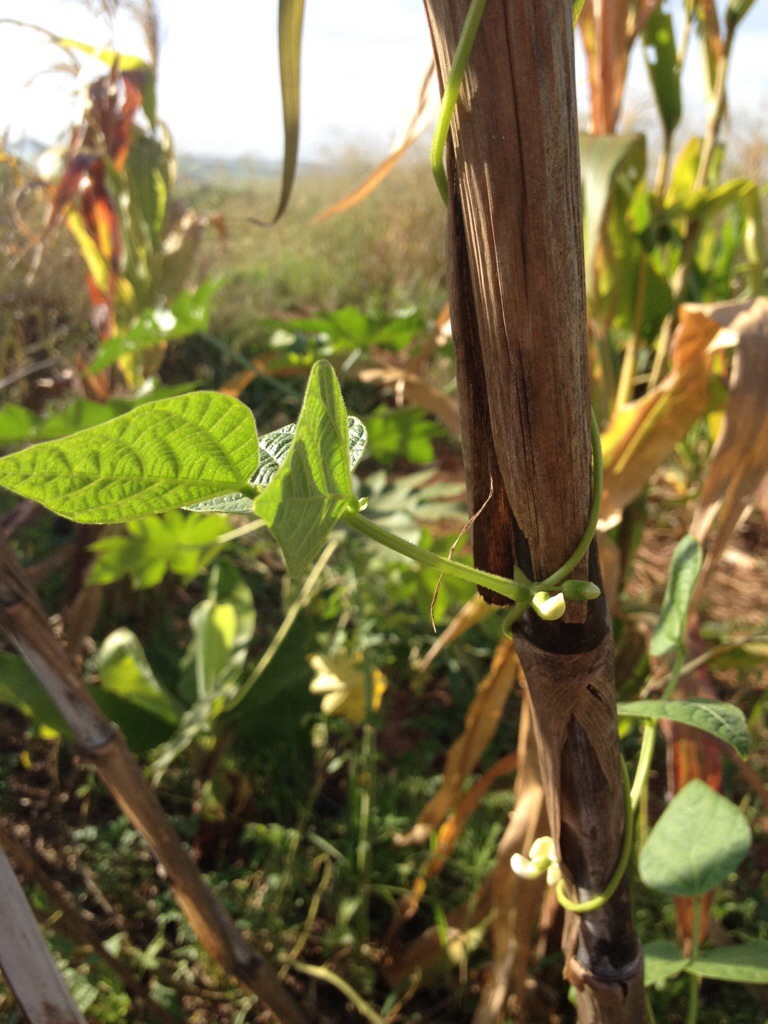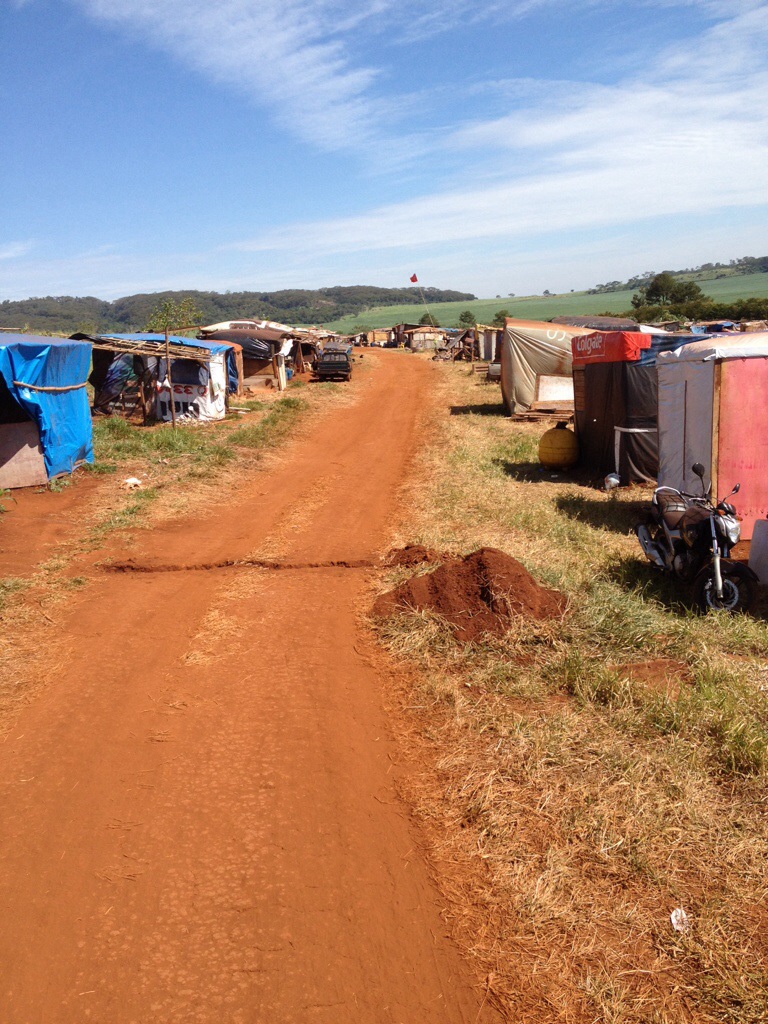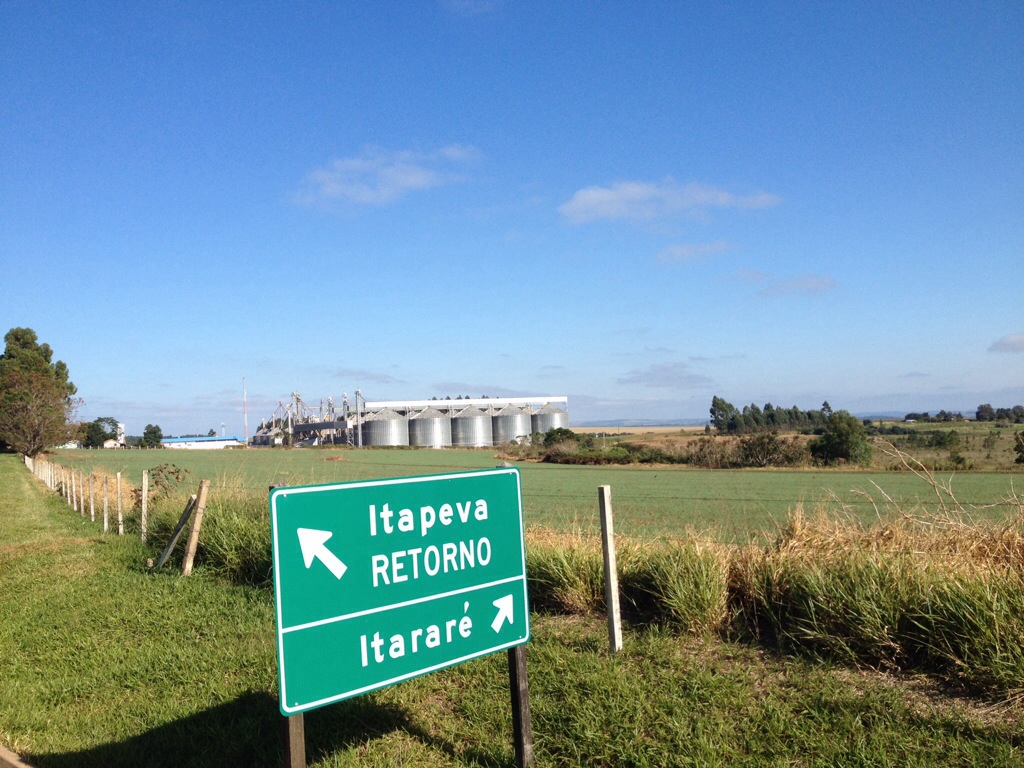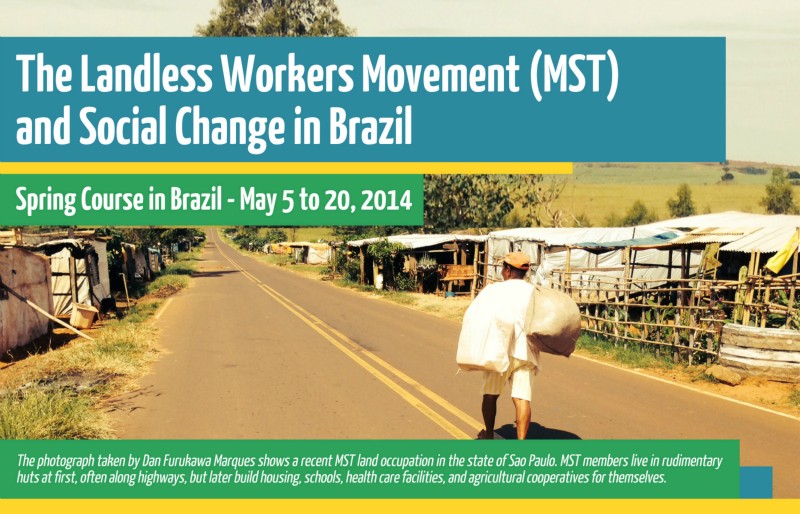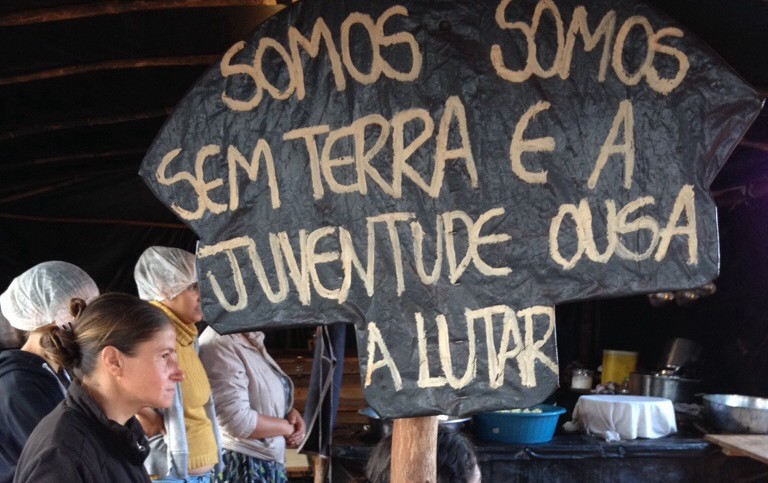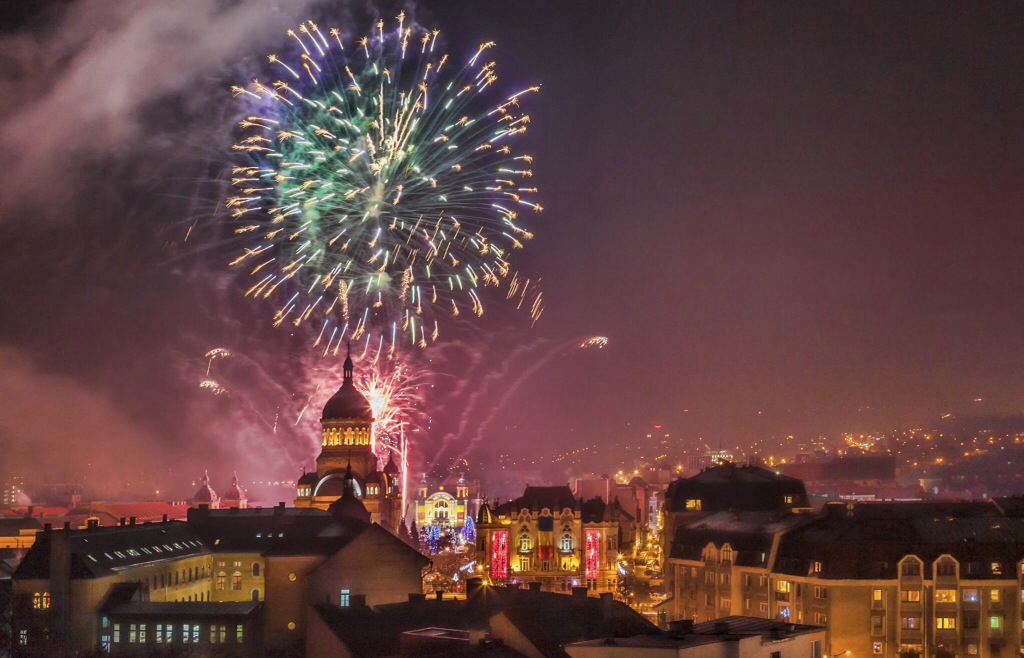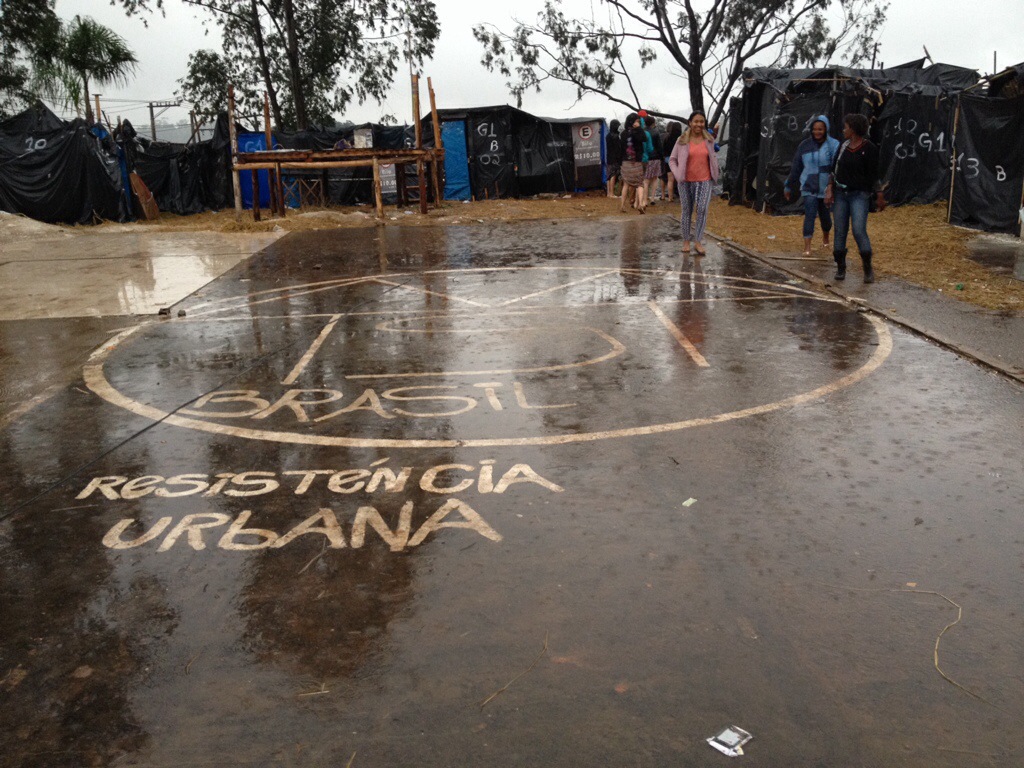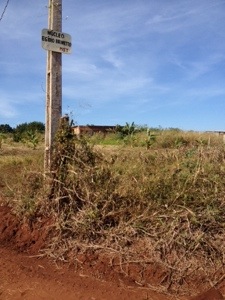
Ribeirão Preto (Heebeirawn Prëto) is a municipality in the heart of São Paulo State. Situated 6 hours northwest of Sao Paulo city it is in the heartland of Brazil’s sugar cane production for ethanol and biofuels. In this fertile land volcanic basalt rock, still rich with minerals, nourishes the soils creating a breathtaking landscape. The mineral rich clay has a distinct red hue. The local farmers in the MST settlement of Maria Lagos lament the fact that the majority of the land is only used to plant and harvest one crop with the use of industrial fertilizers and toxic pesticides.
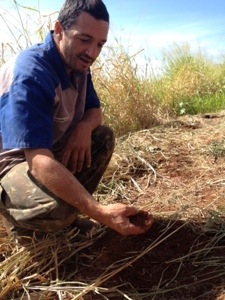
“You can grow anything in this land,” a local farmer tells our group. “But most people have gone back to planting just one crop to sell on the market.” He explains to our group how the history of monoculture (the cultivation of a single crop–on a farm, area or country) in the region has caused various problems for small scale farmers. Among the issues of large scale monocultural activities in the region has been the erosion and saltation of the soils, the saltation of fresh water resources causing and shortage of water and larges scale deforestation. A simple scan of the landscape shows the contrasting difference between the natural landscape and the cultivated land.

“The law says you can’t cut down any of the forest above a 45 degree inclination,” our guide tells us. “That’s the law, but that’s not always respected.” The rolling hills of the area are covered with dense forestation at their peeks while the rest of the landscape resembles a neatly trimmed golf course with a green that stretches for hundreds of kilometers into the horizon. The majority of the land is owned by large corporations and large landowners. Four settlements have succesfully been able to force the state to expropriate land and divide it between hundreds of families, two of which were settled by MST families. In the settlement of Maria Lagos, where we are being hosted, 240 families have received 1.7 hectares of land each for small scale subsistence farming. They were granted this land after a four year occupation of a large fazenda (historical large landowning spaning hundreds of kilometers). The settlement is only 12 years old which is considered relatively young compared to the 30 year-old settlements in the state of Rio Grande do Sul. It still lacks a proper school, health clinic and paved roads. The clinic and school are the main priority of the settlers at the moment, that and the pressing issue of water.
The settlement rests above the Guarani Aquifer, a large underground fresh water reserve that spans across eight countries, yet it lacks fresh water for irrigation because the local surface water is either heavily contaminated with agrotoxins from pesticides or too salty to use. The state has set up wells that distribute fresh water to 45 families (per well) for household use and strictly prohibits the water’s use for irrigation, yet some farmers have been driven to desperate measures like tapping the wells supply to irrigate their land so they can produce the bare minimal for survival.
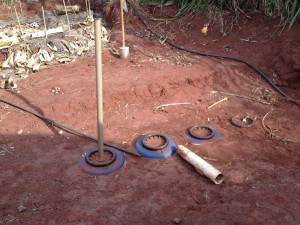
Other methods from Africa have been incorporated using funds from Brazil’s national petroleum company Petrobras. The ingenious irrigation system collects rain water into a large cement structure which then is filtered by three 500 liter plastic containers which act as purifiers to clean the water of toxins then distributes this to a simple irrigation system consisting of perforated flat plastic hosing running along each line of the farmer’s crop with shut off valves at each connection point.

This system is part of Petrobras’ attempt to support small scale farmers in the region. Our guide tells us it’s also a huge marketing campaign to rebrand the company as environmentally conscious and eco-friendly. The farmers that receive this subsidy from Petrobras are required to wear company merchandise at agronomy fairs and promote the project at a national level. While the farmers recognize this as a propaganda campaign they accept the terms because they either wise could not afford the equipment they use to irrigate their land. In a land where fresh water has become as scarce as money the local famers accept many terms that put them in precarious circumstances.
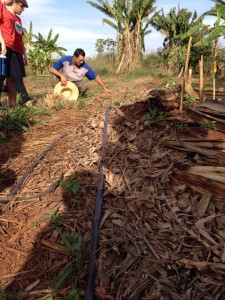
But not all projects implemented in the settlement are viewed as opportunistic. Agroecology is the direction the MST wants its members to follow when it comes to planting plants. The organization wants to implement this pesticide-free planting in the settlements were membership is high as a way of creating a culture of crop diversification as opposed to monoculture. It consists of planting multiple crops in one area and creating natural fertilizers from dead wood, chicken and cow manure and green organic matter (weeds that are cut down and left to rot rather than being cleaned up). The practice would see all of the MST settlers planting crops with different harvesting cycles so as to create a harvesting scheme that can be self sufficient and not degrading to the soils.
In order to put these principles into action every plot of land must first be prepared. It begins by un-compacting the land with the use of light machinery and by hand to loosen the soil so it becomes more permeable, then planting invasive prairie vegetation like African sweetgrass. This is followed by razing of the crop once it reaches full height and leaving it to decompose as green compost. Next is the creation of lines for planting. The seeds or seedlings of each crop are planted side by side another smaller crop so as to help each other during the growing process. Banana, cassava (manioc), egg plant, carrots, passion fruit, pineapple, onions, mustard are all cultivated side by side in a complex system of tall and small crops. Each line is separated by 3-4 feet of space and covered with dried sugar cane which acts as mulch to control the spread of weeds.
Along former forested areas in Ribeirão Preto the project seeks to plant native Brazilian trees and reconnect the forest on the peaks with the river 300 meters down from the farmer’s land. The overall plan is to plant crops inside forested land like it used to be done before monoculture dramatically changed the landscape. A working example of this can be found in the settlement of Alexandra Koluntai 45 min away. Tomorrow we’ll be visiting this ideal model for agriecology and agriforesting.

